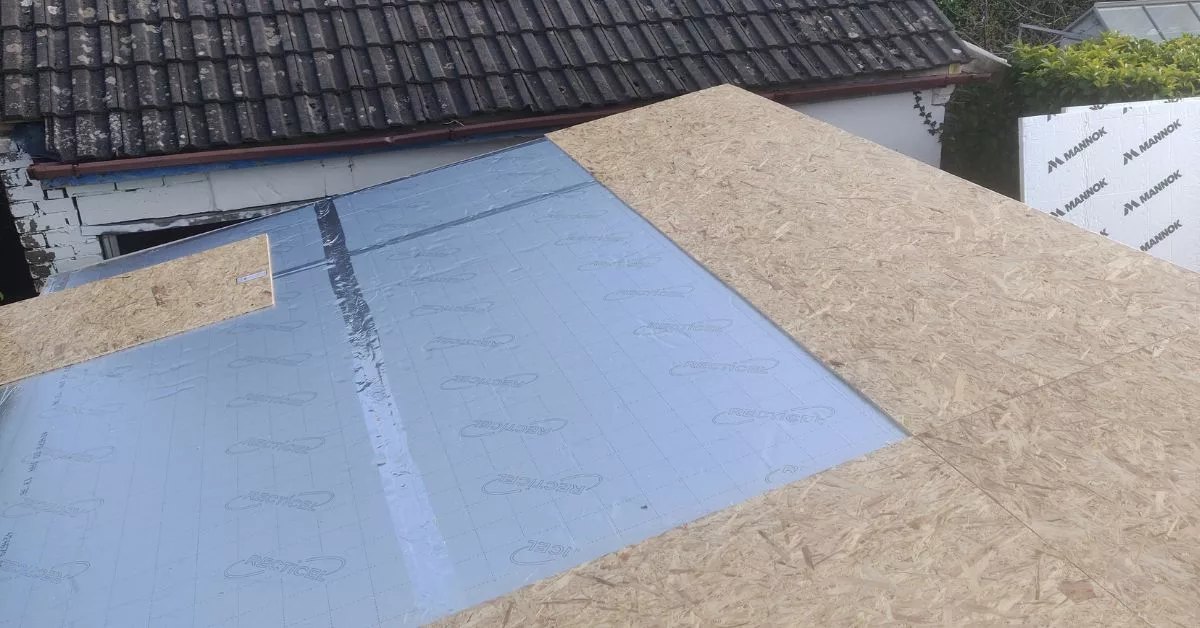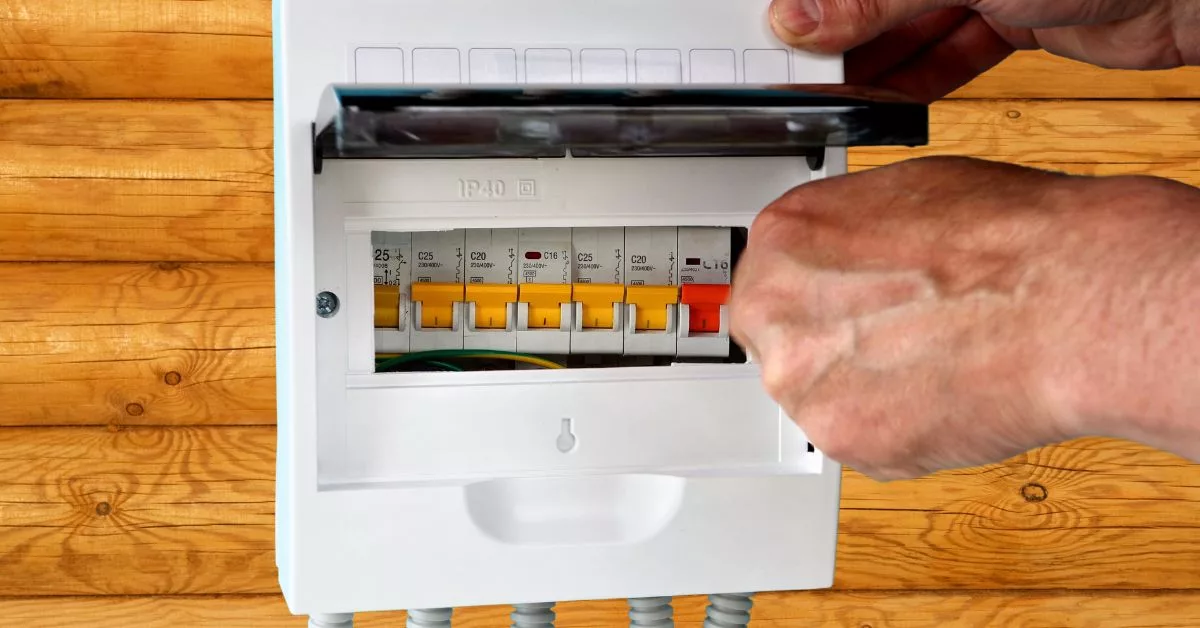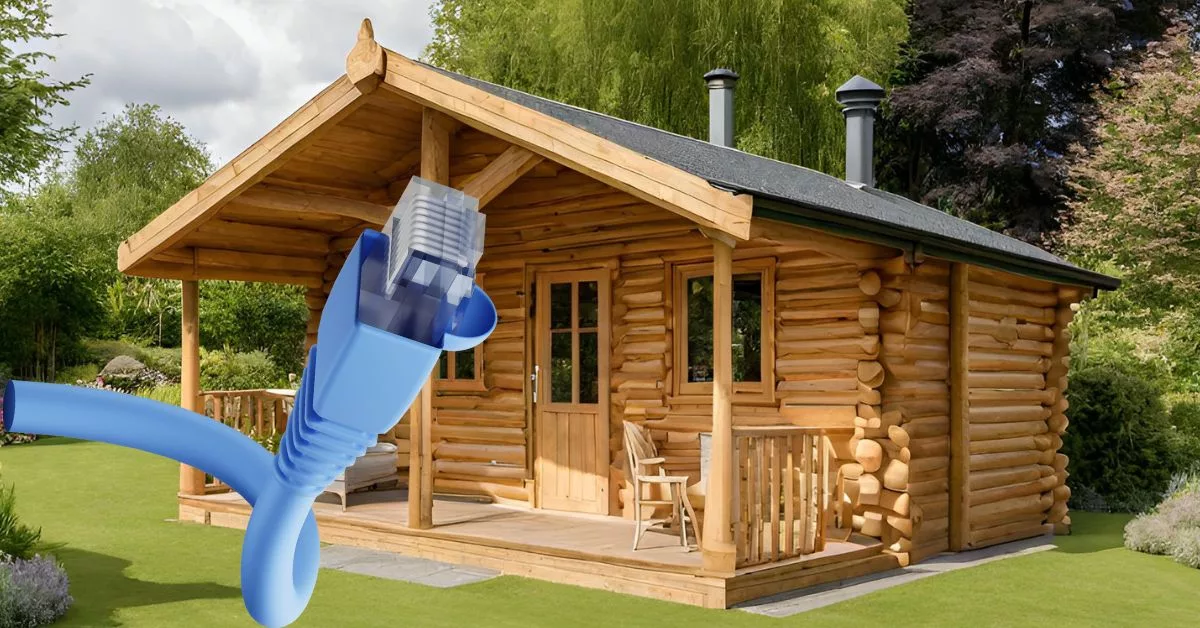If you’ve invested in a log cabin or you’re planning on investing in a log cabin it makes sense to get as much use out of it as possible. A properly insulated log cabin can be used throughout the year, not just in the summer months.
How To Insulate a Log Cabin
Five areas need to be considered when insulating a log cabin, they are:
This article describes the five areas of log cabin insulation. Giving tips and advice on how best to insulate a log cabin and the pros and cons of the different insulation methods.
How To Insulate Log Cabin Walls
There are three common ways of insulating log cabin walls, they are:
- Buy a log cabin with thick wooden walls
- Buy a doubled-walled log cabin
- Apply insulation to the walls
Thick Log Cabin Walls
For many people, buying a log cabin with thick wooden walls is probably going to be the best option.
For a reasonable level of insulation, cabin walls should be at least 40mm thick. Obviously, the thicker the cabin walls the better the insulation
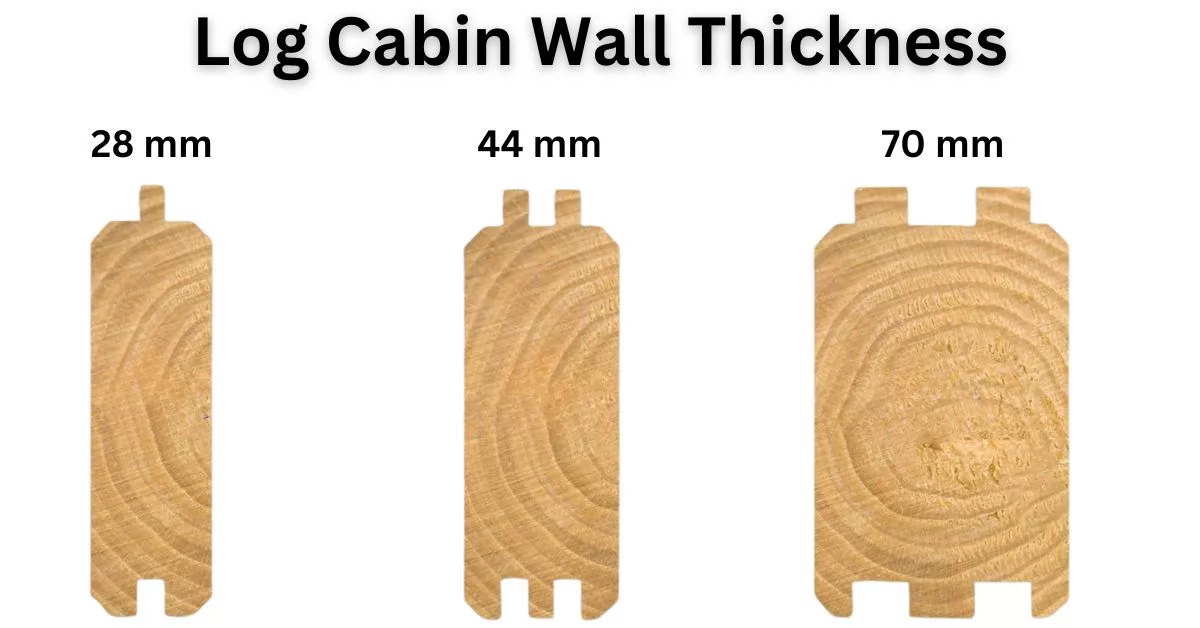
Pros Of Thick Cabin Walls
- Cheap Insulation Method – Buying a log cabin with thick walls is usually the cheapest way to insulate log cabin walls.
- Convenience – As the walls themselves are providing the insulation, there is nothing extra that has to be done or purchased to take advantage of the insulation they provide.
Cons Of Thick Cabin Walls
- Weight – The thicker the log cabin walls the greater the weight, which will make assembling the cabin a little more difficult. Especially if you get very thick walls that are 70mm or more.
- Costs – Thick log cabin walls are going to bump up the price. But, as mentioned in the ‘Pros’ section, it is normally the cheapest method of insulating walls
Double Walled Log Cabins
A double-walled sometimes called a double-skinned log cabin has two walls with a gap between them. The gap between the two walls can be left as an air gap or it can be filled with some type of insulation.
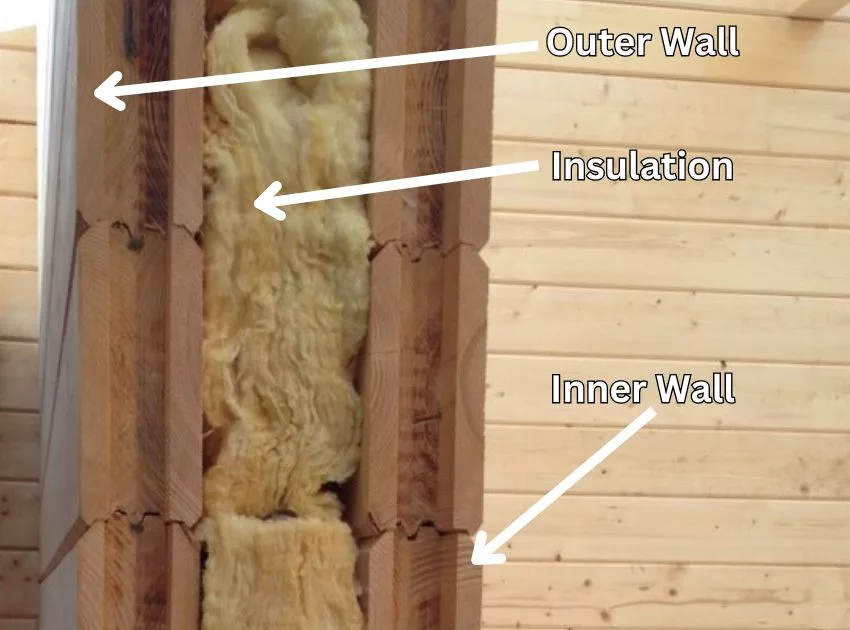
Pros Of Double Walled Log Cabins
- Effective – Double-walled log cabins provide the best insulation possible. If you’re looking for maximum energy efficiency then a double-walled log cabin is a good choice.
- Attractive – A log cabin with double walls enables excellent insulation while preserving the aesthetic charm of the wood
Cons Of Double Walled Log Cabins
- Expensive – A double walled log cabin costs considerably more than single walled log cabins. This is due to the extra materials and labour.
- Weight – The additional wall makes the log cabin heavy, so a good foundation is necessary.
Applying Insulation To Log Cabin Walls
If buying a new cabin it is best to buy one with thick walls or double walled. However, if you already have a cabin and you want to insulate the walls the only option is to apply insulation to the existing walls.
Pros Of Insulating Log Cabin Walls
- Existing Cabin – Applying insulation to log cabin walls is the only option with an existing cabin.
Cons Of Insulating Log Cabin Walls
- Effort – Applying insulation to log cabin walls requires a considerable amount of effort. A frame is required to hold the insulation in place, the insulation installed, and plasterboards fitted to cover the insulation…….not a 2 minute job.
- Movement – Log cabin walls move slightly throughout the year. Fixing insulation to the wall could restrict the movement of the wall and \ or cause the plasterboard to split.
- Damp – Condensation can build up behind the wall insulation which will make the cabin damp.
How To Insulate A Log Cabin Roof
The roof of a log cabin is the place where the most heat is lost. I’ve seen a number of online sources saying that up to 70% of heat is lost through the roof. So, it is really important to insulate the roof.
Insulate On Top Of The Roof
If you have a new log cabin then I would strongly recommend insulating on top of the roof (outside), rather than underneath (inside). The main two reasons for this are:
- Easier – Whatever roof style (pent, ridge, flat etc) your cabin has, it is mostly going to be a large flat area. This makes it very simple to install insulation compared to installing insulation underneath the roof, inside the cabin.
- Ventilation – Insulating on the outside of the roof allows for better ventilation, allowing moisture to evaporate away. Having the insulation inside the cabin underneath the roof can cause moisture to build up, causing all sorts of problems, like mould, dampness, rot etc
If you already have a log cabin that has the felt \ shingles fitted then the only option might be to insulate underneath the roof.
What You Need To Insulate A Log Cabin Roof
Many log cabins that are sold have an insulation kit as an optional extra. The kits are considerably more expensive than buying all the components independently, but they are convenient.
I’ve always purchased the insulation independently, it’s not that difficult to do and saves a fair bit of money
- Insulation – I recommend buying the silver backed foam insulation boards. They are easy to work with and very effective insulation. The insulation boards come in various sizes and thicknesses. Go for boards that are at least 5cm (50mm) thick.
Bestseller No. 1 - Wood Edging – The edging is used to hold the insulation in place on the roof. Buy edging that is the same thickness as the insulation boards. Ideally, the edging wood should be pressure-treated. If it’s not it will need treating to make sure it doesn’t rot.
- OSB Boards – The OSB boards are placed on top of the insulation. Get OSB boards that are around 10mm thick.
Bestseller No. 1 - Screws – Counter sunk wood screws are required to attach the wood edging to the cabin roof and also to attach the OSB board to the edging. The length of the screws will depend on the insulation and OSB board thickness.
SaleBestseller No. 1 - Silver Tape – Silver tape is used to join the insulation boards together removing gaps that heat can escape.
How To Install Log Cabin Roof Insulation
Below are the steps to installing log cabin roof insulation.
STEP 1 – Planning
Be sure to spend a good amount of time thinking about how the roof insulation will be installed. Gather all the measurements, look for potential problem areas etc
“Proper Planning and Preparation Prevent Piss Poor Performance”
STEP 2 – Edging
The wood lengths should be applied around the edge of the log cabin. To make a frame in which the insulation boards can fit.
If you have a reasonably large log cabin you will also want to attach wood lengths across the roof, so that the OSB boards can be screwed down in the middle of the roof.
Some thought will need to go into how far to space the wooden lengths. Ideally, you will want the insulation boards to go in the gaps without cutting them. But you don’t want the gaps too large, that the OSB boards can’t be screwed down.
STEP 3 – Insulation Install
Once a frame has been fitted, lay the insulation boards on the roof so that the frame is filled with insulation boards
Make sure to fill any gaps with insulation board cut-offs. Use the silver tape over the top of gaps and joins.
I didn’t use any screws to attach the insulation boards to the roof.
TIP: Insulation boards are very easy to cut using a fine tooth wood saw or using a Stanley knife to cut a groove in the insulation and then snap it apart.
STEP 4 – OSB Boards
The OSB boards are placed directly onto the insulation to hold it in place. As long as the edging used to make the frame is the same thickness as the insulation boards the OSB boards will sit nice and flat on top.
Use the countersunk screws to attach the OSB boards to the frame
Once the OSB boards have been installed, the roof felt, shingles or EPDM can be laid on top.
How To Insulate A Log Cabin Floor
Insulating a log cabin floor is easy to do, making a considerable difference to the warmth of the cabin. There are various methods and materials for insulating a log cabin floor. Below I describe the method that I have always used that has always worked well.
What You Need To Insulate A Log Cabin Floor
- Damp Proof Membrane (DPM) – DPM is basically a plastic sheet that is laid on the ground to stop dampness from rising.
Bestseller No. 1 - Insulation – The same silver-backed foam insulation boards that are used to insulate the roof can be used to insulate the cabin floor. Like the roof boards, I recommend getting insulation boards that are at least 50mm. The thickness may be limited by the height of the floor joists.
Bestseller No. 1 - Silver Tape – The silver tape is used to join the insulation boards together, eliminating any gaps where heat could escape or draughts could infiltrate.
STEP 1 – Planning
Insulating a log cabin floor is generally easier than insulating the roof. But, it is still important to plan. Think through how the insulation is going to be installed
STEP 2 – Damp Proof Membrane
The damp-proof membrane should be laid before the floor joists are put into position.
When laying DPM it is a good idea to have the DPM going a few centimetres up the sides of the cabin. This will prevent any moisture on the cabin base from getting on top of the DPM, causing the wood floor joists and insulation to get damp.
The DPM can be held in place using glue and \ or DPM tape
STEP 3 – Install Insulation
The floor insulation can be cut to size so that it fits in the caps between the floor joists.
Ideally, the insulation would completely fill the gap between the floor and the base of the cabin. However, it doesn’t matter too much if there’s a gap between the underside of the floor and the top of the insulation.
Use silver tape to cover any gaps and joins between the insulation boards.
Once all the insulation is in place the floor can be installed on top.
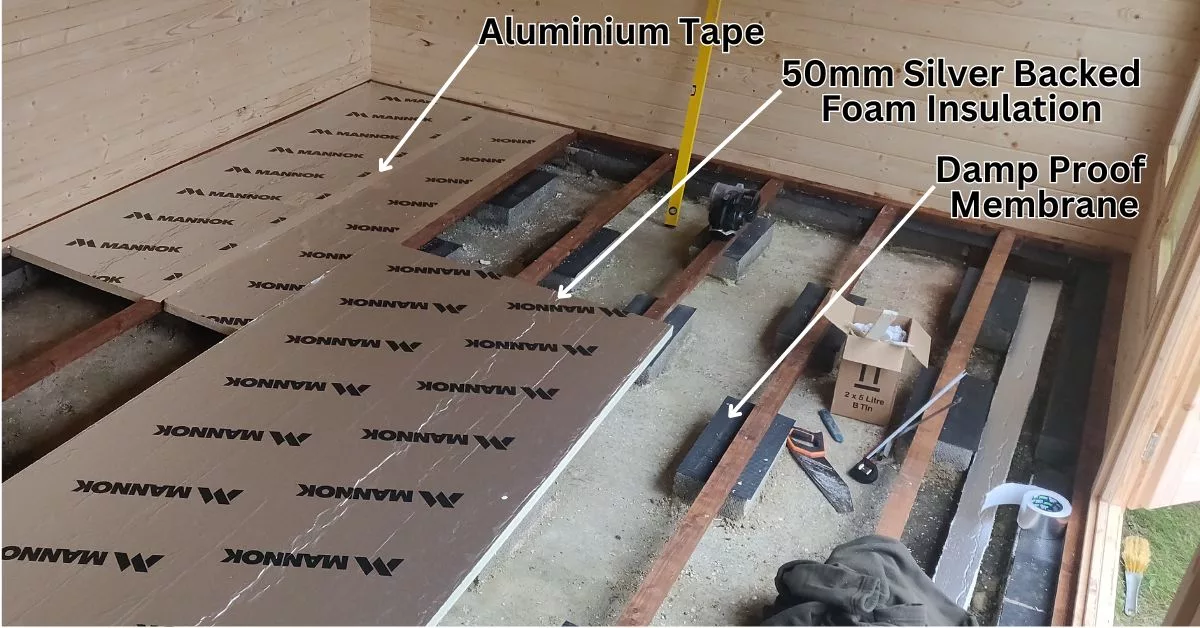
The image above shows the floor insulation being installed in my last cabin. It is slightly different from the other cabins I’ve installed. In that, the floor joists are raised off the concrete base using concrete blocks. The reason for this was the concrete base was an existing base for an old shed and it wasn’t level. The concrete blocks were used to level the sections where the cabin walls and floor joists sat.
Log Cabin Windows
Most log cabins that have a wall thickness of 40mm or greater have the option of upgrading from single-glazed windows to double-glazed windows.
If you’re getting a thick-walled log cabin it makes sense to get double-glazed windows. They provide much better insulation compared to single-pane windows.
Log Cabin Door
For best insulation ensure that any glass in the log cabin door is double glazed for the best insulation.
Conclusion: How To Insulate A Log Cabin
It is well worth spending time and money insulating a log cabin. It’s not too difficult to do, it saves a load of money on heating bills and thanks to the large number of different insulating materials and methods it is possible to insulate a cabin on any budget.
FAQ: Insulating A Log Cabin
Cheapest way to insulate a log cabin?
The cheapest insulation is usually fibreglass. However, there are a number of downsides to fibreglass, the main one being that it absorbs moisture. It would be better to use something like Rockwool which looks similar to fibre glass but doesn’t absorb moisture. Rockwool is more expensive than fibreglass insulation.
Insulating log cabin roof from the inside?
Log cabin roofs can be insulated either on the underside (inside) or on top of the roof (outside). I would always recommend insulating on top of the roof. It is much easier to do and I think looks much nicer.
What is the best insulation material for log cabins?
I’ve always found that the best insulation for the roof and floor is the silver backed foam insulation. It’s easy to use and it does a good job of helping keep a log cabin warm during the cold weather
To insulate log cabin walls it is usually best to buy a cabin with thick walls. Adding insulation to walls is time-consuming, reduces the internal area, and is prone to condensation problems.
For windows and doors always go for double glazing. It is more expensive than single-glazed glass, but you will appreciate the difference it makes in keeping the log cabin warm.
How thick should log cabin insulation be?
As thick as possible. If using the silver backed insulation board then go for at least 50mm thickness.

